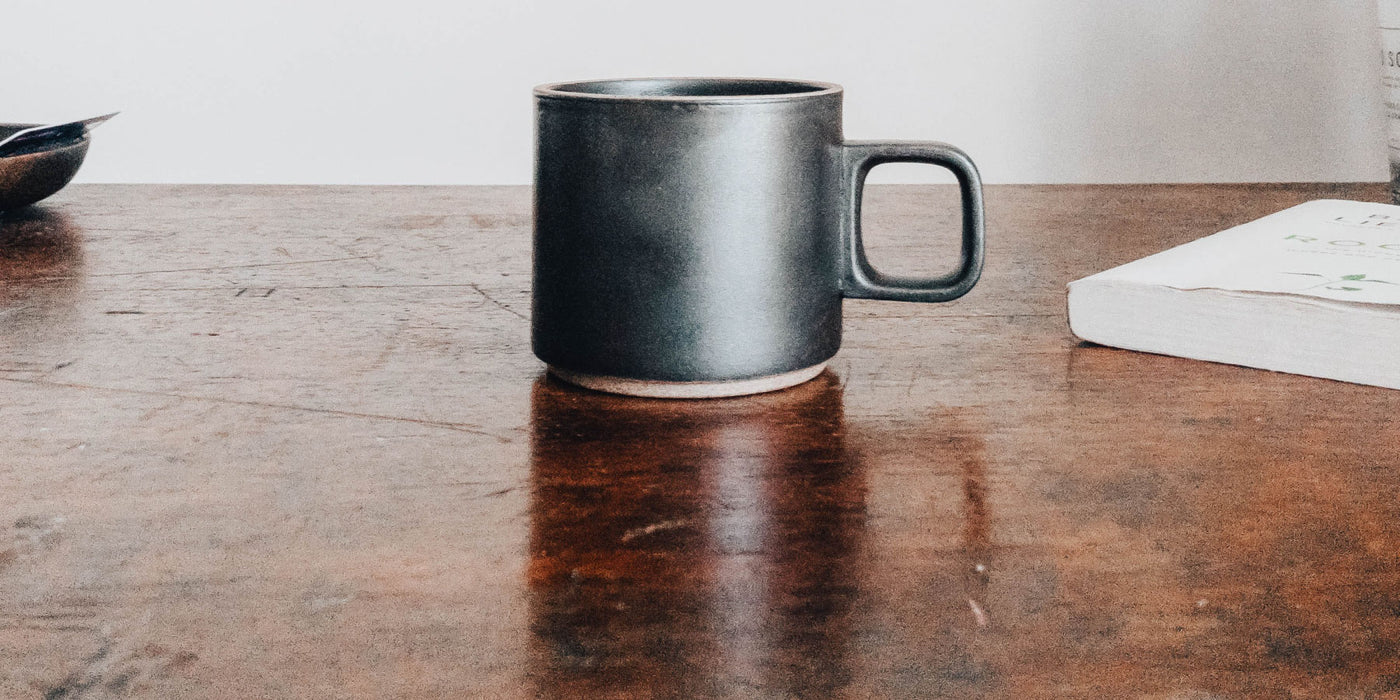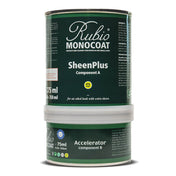When To Refinish Wood Furniture
Refinishing wood furniture like an old desk, chair or table is generally done to change the color or because the finish is old or worn.
You may want to refinish it with something in a similar color range, clear, or perhaps in a completely different color that fits their décor.
Finish Options
Polyurethane
Traditional polyurethane wood finishes are available in oil-based and waterborne formulations. They provide a film-building finish that is typically applied in a 3-coat process. If you prefer a color, it typically requires apply stain and allowing it to fully dry prior to applying the poly.
This type of finishing product provides a plastic-like finish that obscures the natural feel and touch of the wood but offers good protection.
Hardwax Oil
Hardwax oil is formulated from a blend of waxes and oils. They saturate the wood and allow keep the natural look and feel. Their formulation also allows for most hardwax oils to be very environmentally and user friendly.
We've written extensively about hardwax oils.
We believe hardwax oil, specifically Oil Plus 2C, is an ideal wood finishing product. It is a very easy-to-use product, even if you have limited skills in refinishing wood furniture.
It provides an excellent performing wood finish in a simple one-coat application process! And, a broad range of colors are available!
Now that you know about the available finishing options, we will explain the process of stripping, preparing/sanding, and refinishing a wood furniture project with Oil Plus 2C to achieve a beautiful, natural, hand-rubbed wood finish.
Stripping
The removal of an old coating from a wood furniture project may be a little challenging, but with the right tools and chemicals, it is not that hard to do. Sanding may be an effective removal method, but often a good quality chemical paint stripper is a more effective way to remove an old wood finish from more profiled pieces of wood furniture. Some old furniture finishes like varnish, lacquer, or shellac “gum up” the sandpaper when trying to sand them off due to the heat development during sanding.
Chemical Paint Stripping
Chemical paint strippers are manufactured with a mixture of solvents that dissolve the old finish it is applied to. Often, there is a wax component in the chemical paint stripper that floats up and forms a film on the surface once the stripper is applied to minimize solvent evaporation and keep the chemical active for longer. This is why you should quickly and generously apply paint stripper to the surface. Do not brush it in continually, let it work to dissolve the old finish. Multiple applications may be needed. Once all stripper and coating residue is removed, immediately follow with a clean-up solvent that is recommended by the manufacturer to remove traces of coating and chemical paint stripper residue.
Always follow the usage, safety, and disposal instructions as outlined on the TDS or website from the manufacturer of the chemical paint stripper.
Once the stripped surface is dry, follow with sanding to clean up the surface and ready it for the oil application. See sanding instructions below but start with a finer grit.
Removal by Sanding
Removal by sanding is a process where you start with a coarse grit to remove the coating from a wood surface. The use of a good quality electrical sander and dust extraction will be a handy and welcome tool in this process. Sharp scrapers are often useful for coating removal in less accessible areas like corners.
Start with a grit that is coarse enough to remove the old coating but do not use coarser grit sandpaper than needed. Rough scratches that get put in the wood need to be sanded out again. Replace the sandpaper once it starts to wear down, do not bear down on the sander but let the tool do the work.
Once the wood is exposed, continue with consecutive finer grits until the wood is sanded smooth up to 120-150 grit sandpaper. Finer machine sanding than 150 grit will close the wood grain and reduce the ability for Oil Plus 2C to enter the upper wood cell structure properly. When you see a shiny sanded wood surface, it is sanded too smooth.
Use a bright flashlight or floodlight to inspect the work surface to evaluate your sanding for sanding marks. Look for the telltale "pigtails" on the surface. Once you get to 120 grit, they are usually less or hardly noticeable. Different sanding tools and equipment will result in different sanding results. Different qualities of sandpaper will also make a difference.
When hand sanding, always follow the length of the grain to avoid cross-grain scratches!
Remove all sanding dust with the aid of a vacuum cleaner.
Oil Plus 2C Application
The application of Oil Plus 2C is not a complicated process. Below is a list of things needed for the successful application of Oil Plus 2C to the prepared wood furniture.
Things needed:
- Enough Oil Plus 2C in your preferred color
- Raw Wood Cleaner
- Clean mixing container
- Paint can opener
- Stir stick
- Measuring device (if not using all of the oil)
- Latex or nitrile gloves
- Safety goggles
- Applicator Set for the application of the oil
- Good quality absorbing rags or terry cloths
- Water filled metal can with lid for disposal of oil-contaminated rags and pads
Cleaning the Surface
- Wipe the stripped and sanded wood surface down with a rag dampened with Raw Wood Cleaner and allow it to dry completely.
Oil Preparation
- Calculate how much you will need. 1 Liter finishes approx 300-500 square feet. A 350ml can will finish approx 140 sq ft.
- Stir the contents of the Part A can thoroughly to fully mix the oil and disperse any settled pigment.
- Recall the amount of oil required for your project. Because you'll mix Part A with Part B at a ratio of 3:1 (A:B), divide the total amount needed by 4. Then mix 3 parts of A with 1 part of B in a separate container.
Oil Application
Oiling and finishing wood furniture is to be done in sections that are manageable and can be completed within about 15 minutes.
Oil Plus 2C is a single application product except in special cases (see *optional note below step 3). This means one application and you get color and protection!
The general process is simple, simply apply the oil, allow it to molecularly bond to the wood, then remove all excess.
- Apply a small amount of oil on the wood surface. You may use a small brush for vertical areas, or pour a small amount on a flat surface. Spread the applied product over the wood in a circular motion using the Applicator Set. If you oil a larger surface like a tabletop, you may also use a small spreader tool like a Bondo-spreader or a small window squeegee.
- Allow the applied oil to molecularly bond with the wood for 3-5 minutes.
- Within 10-15 minutes of starting this oiling process, remove all excess applied oil with a good absorbing rag.
On highly porous species an additional application may be needed if the wood can not be fully saturated during the first application. You can tell if an additional application is required if the surface still appears a bit dry/hungry after 8 hours.
In this case, follow the below procedure.
- Allow the previously oiled wood to dry at least 24-36 hours (granted the drying conditions are favorable).
- Lightly scuff the surface using a maroon Scotch-Brite style pad.
- Vacuum well and wipe clean with a dry rag.
- Apply a small amount of Oil Plus 2C and spread evenly the same way as originally applied.
- Remove all excess oil the same way as originally removed.
Drying time and Handling
Allow the oiled wood surface to dry under favorable drying conditions. This means temperatures at least in the 65-70F range, relative humidity (RH) around 50%, and plenty of air movement. Cooler conditions or very high RH will extend the dry and cure time.
The furniture may be carefully handled within 24-36 hours. It is cured approximately 80% in 48 hours and fully cured within 5 days.
Do not expose the oiled surface to moisture until completely cured!
Alternative color options
If you prefer colors that are more in the primary color and whimsical color range and heavier pigmented with a semi-solid appearance, Rubio Monocoat also has an additional product choice, Hybrid Wood Protector (HWP). Designed for exterior applications but suitable for interior as well, HWP offers color options for those with a bold preference.
The application of HWP is similar to those outlined above.


